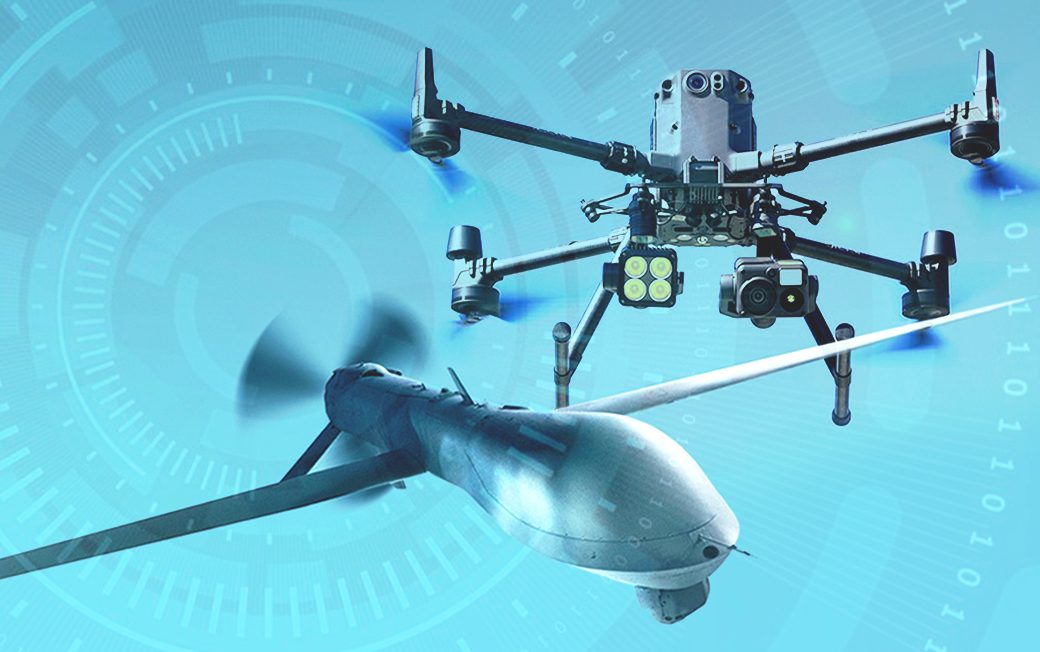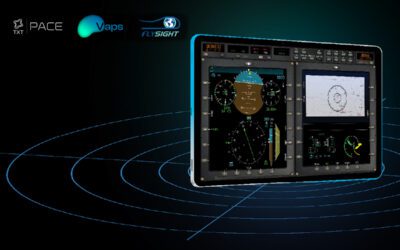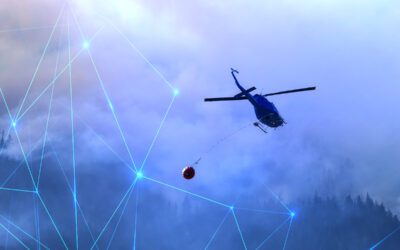Uncrewed Aerial Vehicles, or UAV technology, have been around for over a century. First making their appearance during WWI, today’s more highly advanced technology is pushing the boundaries of modern military and civilian aviation. With many applications, UAVs are continually evolving as technological miniaturisation allows even more functionality to be packed into relatively small devices.
In this article, we’ll examine the advances in recent times and see how UAV technology is opening up new areas in everything from military surveillance to forest reseeding and fire management. We’ll look in detail at the various types of UAV technologies including drone design, flight control systems, data processing and communications systems.
We’ll also discuss how FlySight’s OPENSIGHT Mission Console system integrates into current drone technology and its applications.
A brief history of modern UAVs
UAVs, as we know them, have been a relatively recent advancement that was initiated by the development of smaller components. Miniaturisation is the key to drone technology, allowing small, light, and highly manoeuvrable uncrewed aerial vehicles to be used in situations that would otherwise be dangerous to human-crewed aircraft.
While reconnaissance drones were first used on a large scale during the Vietnam conflict, it was in Afghanistan and during Operation Desert Storm in Iraq that they really came into their own in a military capacity. Not only were they used to collect intelligence, but they also acted as decoys, carried missile payloads, and dropped leaflets as part of the ‘hearts and minds’ approach to modern warfare.
The functionality of UAV technology has continued to progress in keeping with the advancement of computerised and AI technology in particular. Still playing a pivotal role in military operations, modern UAVs now have a much more significant role in civilian applications, particularly law enforcement, SAR and fire control. Even deliveries from online retailers are now potentially being made by UAVs, although how successful this will be remains to be seen.
The explosion of personal drones has made the public much more aware (and more accepting) of the concepts of UAV technology in everyday life.
The different types of UAV technology
What exactly do we mean when we refer to UAV technology? Simply put, it’s the hardware, software, and integrated systems that enable operators to control the vehicle remotely. Recent developments in AI and machine learning have pushed the technology to the next level, allowing UAVs to become fully autonomous.
Drone design takes into account the physical dimensions of the vehicle, including propulsion and payload capacity. Flight control systems include the controller, GPS and autopilot software, while the sensory equipment includes cameras, LiDAR, multispectral sensors and thermal imagery.
Drones need to be able to communicate with the base operator, including the capacity for real-time data transfer and remote monitoring, 3D modelling and geospatial analysis. Finally, UAV technology also needs to include safety and security features such as collision avoidance and geofencing.
Technology evolution and its applications
Let’s now take a more in-depth look at the advancements that UAV technology has gone through recently and how it is integral to everyday operations. The most important advancement has been the ability to integrate additional operational systems within the current size and weight parameters of the average UAV. This expands the usability of UAVs beyond surveillance and data gathering.
The integration of remote pilot technology is the first thing to look at when talking about modern UAV technology. During search and rescue, firefighting or other critical missions, the ability to improve the speed and accuracy of locating everything from rescue targets to the seat of a fire without putting human operators at risk is paramount.
FlySight’s OPENSIGHT mission console has been developed not just with the technological advancement as a central core, but the user experience and effectiveness of the device within hostile environments such as at sea, across mountainous terrain or in the middle of disaster zones.
The aim is to enhance real-time awareness and mission planning using the most up-to-date and accurate situational data available. By creating a remote pilot system that connects the AUV to the base operator in real time, that data can be collated and analysed far more quickly and accurately. This allows a mission reappraisal and for priorities to be changed in accordance with the data received.
AI and AR capabilities
Two of the most significant technological advancements in AUVs have been the integration of AI and the use of Augmented or Enhanced Reality. At FlySight, we’ve been developing AI and ER to extract information from payloads onboard UAVs. As part of this, we’ve created a plug-in that complies with NATO STANAG 4586 requirements that integrates the OPENSIGHT Console with UAVs.
This plug-in enables operators to achieve faster and clearer video encoding and transmission. This is particularly advantageous for advanced UAV operations such as firefighting, particularly in remote or hard-to-access terrain.
The incorporation of artificial intelligence (AI) and machine learning has also been a game-changer. These technologies improve data analysis and situational awareness by quickly mapping the terrain, such as fire-affected areas, and predicting fire behaviour, enabling more effective response strategies.
The integration of real-time data from multiple sources such as satellites, field sensors, and tower-mounted cameras, has further enhanced the accuracy and speed of detection and response, proving invaluable in both combating and preventing critical situations.
Communications technology
The ability to communicate with a UAV is mission-critical, and recent advances in this field have led to the ability to share videos, images and tactical maps in real-time, often enhanced with AR layers. This significantly improves the situational awareness of both ground-based and aerial operators, who may then move into the field of operations once the initial data has been retrieved by UAV technology.
Targeting technology
Significant progress has also been made in actuators for targeting systems. The accuracy of these actuators has markedly increased while still maintaining cost efficiency and useability. This means that targeting mechanisms are now more precise without incurring additional expenses.
The improved actuators enhance precision in positioning and aiming various equipment and sensors. This, in turn, results in more accurate data collection and monitoring capabilities. With far more sensitive and precise targeting technology, there is a reduced margin of error in critical operations and improved overall system performance and reliability.
Other applications
One of the more unusual applications for UAV technology is for reseeding forests. UAVs can carry a payload of seeds that can be aerially deployed by drones in hard-to-reach locations such as in mountainous terrain or deep into wilderness areas.
UAVs are finding a niche in fire management for controlled burns (used to prevent wildfires). The multispectral cameras can also identify a fire seat far more quickly, allowing firefighters to strategically target an exact location to prevent a fire from spreading.
Systems for training and threat simulation are another area where UAV technology comes into play, particularly for military and combat training.
The functionality for rapid deployment, VTOL take-off, payload triggering, and creating autonomous flight paths makes UAV technology one of the most adaptable and far-reaching aerial operating systems today.
Find out more about OPENSIGHT
In a fast-moving world, you need a partner that delivers UAV technology that really works. From civilian operations to Search & Rescue, FlySight’s OPENSIGHT Analyst Console and Mission Console technology integrate Enhanced Reality and machine learning into your aerial operations.
Contact us today to find out more about our technology solutions for uncrewed aerial vehicles. Or take a look at our Video resources collection to see how systems such as our NATO STANAG 4607 Ground Target Tracking Enhancement, Automatic Target Recognition and Mission Console technology can be integrated into your operations.





